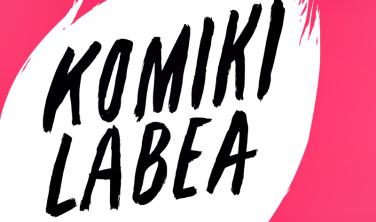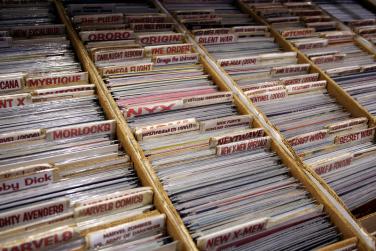

CC_BY_SA_2.0_Ginny
Conflicts, wars, social movements, struggles of the most deprived... Comics are also an essential window into current situations.
David Zapirain has made a selection of social comics which will be on show at Ubik. What criteria did he base it on? What are the essential titles? Come to the presentation and discover these extraordinary titles. You can also take them out on loan.
A Harlot´s Progress, by Hogarth; Histoire en estampes, by Töpffer: social issues were already at the very birth of modern stories using images. It can also be said that as their development was not part of academicism, the mere appearance of the comic technique was also a social issue. Furthermore, we cannot overlook the satirical and critical nature of those new stories using drawings. Therefore, the social function is an aspect that cannot be separated from the appearance of the comic.
Moreover, the social nature of comics does not only come down to supply and demand; it is also determined by the relationship or involvement between the artist and their readers. When all said and done, what is “the social”? Tito y Tif by Xaudaró, Tintin in the Congo by Hergé, or Les aventures de Manzana et Patxaran by George & Viollie,.. are explicit examples of works that reflect the social values of an era and/or of their authors. In other words, even if there is no critical invention, or due to its absence, artistic expression does not cease to be social, as it also helps to understand both the society in which it is expressed and to identify the accepted dominant ideology. Therefore, comic books such as 1984 Grenada, published by the CIA to justify the invasion of that island, or sending the Suicide Squad in comic form to fight the Sandinists, are tools that help to introduce a certain ideology in society. Because, as has been said, comics are not neutral, as art is not in general.
On the other hand, by making drawing the basis of their communication, and as they are considered part of children’s literature, comics, and even more so in their comic book version, can be camouflaged as something completely inoffensive. We should not be surprised that that innocence was used by, for example, V. Mora, through works such as El corsario de hierro or the better-known EL Capitán Trueno, to bypass Franco’s censorship and disseminate another type of social values. This is a means for ideas about gender, equality and human rights to appear as something natural when we are children.
Leaving our childhood memories on one side, the force of social narrative by means of scripted drawing is clear both in the Tirabirak initiative, a project part of the DSS2016 European capital culture, or in the daily or weekly date with Tasio, Oroz, Olariaga, Zaldieroa and Irritzia. Even though it is nearly impossible to fill the universe that stretches between that childhood and today's DSS2016, it is home to SOS dossier ecológico, Makoki, El Vibora and without forgetting the hundreds of anonymous comic artists in our fanzines. Then there are the Sci-Fi albums with the most unbearable dystopias or which proclaim the social values of equality through demands from ….. mutants.
This insinuated universe is filled with personal memories, but any selection or presentation also reveals a biography through the comic. Or a culture, if you prefer. Which, of course, can also be a declaration of social intents. We do not believe that the curator’s work escapes this rule.
On the other hand, there are authors that propose a critical reading of the “social” label in its application to the comic, as it thus leads one to a broad excess and even exaggerated, presumably non-fictional theme. This will thus dilute the social function that they believe inherent to what should be more accurately called a social comic. This, obviously, weakens that social comic and to its contents, as they are blurred when mixed with private themes. This was affirmed, for example, by M. Prior in an interview published by La Vanguardia (2016-01-29) when it was pointed out: the social comic label tames that part that should be subversive.
That being so, we believe that even though each person exhibits or reworks their comic-strip or cultural genealogy, in other words, even though the personal story with which each of us embellish ourselves is just that, personal, when the private cultural experiences or memories are generalised and shared, they transcend the individual and make up a common, and at times popular, culture. Asterix and the Nuclear Power Stations is a magnificent example of that union between comic and social cultural protest through popular culture.
We have sought to take all those aspects into account in the list or description below. Social protest is not always explicit; social protest is not only about the immediate society; social may also be personal. Yet, above all, both in a strictest sense and according to a wider acceptation, the social comic is not boring.
With this in mind, we have prepared this selection for you, that seeks to startle you, invite you to reflect and for your enjoyment.
David Zapirain
David Zapirain has made a selection of social comics which will be on show at Ubik. What criteria did he base it on? What are the essential titles? Come to the presentation and discover these extraordinary titles. You can also take them out on loan.
